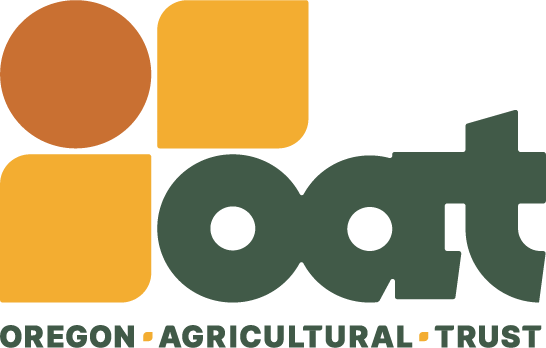In 2017, the Oregon legislature established the Oregon Agricultural Heritage Program (OAHP) to protect agricultural land around the state through working land easements, conservation management planning, succession planning education, and technical assistance. $5 million was allocated to the program in 2022 (which in turn brought in over $6 million in federal matching dollars). This has provided great benefits to Oregon farmers and ranchers who wish to protect their land and pass it onto the next generation.
Over the past year, OAT joined partners including Coalition of Oregon Land Trusts (COLT), Deschutes Land Trust, and Oregon farmers and ranchers to advocate for increased funding for this important program. This February, our Land Program Associate Tara Olson teamed with COLT in Salem during the short session to meet with legislators and share the importance of OAHP to Oregon’s communities, economies, and landscapes. As a result of this work, 5.8 million was allocated for OAHP in 2024!
Learning through Osmosis
Tara’s Experience
It just so happens that advocating for OAHP was my first time engaging with legislators at the state capitol. I was nervous at first but, as OAT Executive Director Nellie McAdams shared with me, “It’s ok, you’ll learn through osmosis.”
What was at first an intimidating concept turned out to be an eye-opening experience on the legislative process and the people that take part in it.
Not only politicians are allowed in the capitol building. After a quick security check at the front doors, you can see where the action happens. The halls of the capitol are always busy, whether you’re on the first floor near the hearing rooms, or on the upper floors where legislators have their offices. It turns out that you can knock on your legislator’s door, and if their schedule allows, you can meet with them then and there.
Legislators are friendly people with curious questions. Although I came prepared to the capitol with my talking points, nervously flipping through pages of notes, I was pleasantly surprised at how conversational many of the meetings with legislators were. They asked great questions that would help them better understand our issue and their ability to support it. It helped that the team I was with at the capitol had already built ongoing, long-term relationships with many of these legislators, just by continuing to show up and advocate for important issues (like land use).
Legislative staffers are just as important allies as legislators themselves. By nature of the job, legislative staffers have more time to meet with you, both at the capitol and on informational tours. When I was meeting with legislative staffers, I noticed how engaged they were in our conversations, and how they made sure they could communicate our message back to their legislator. I even began to recognize some staffers, who had attended our farm tours to learn about OAHP on behalf of their legislator.
So, if you’re hesitant to start engaging, know that advocacy work is not as scary as it seems. We invite you to engage alongside us as we continue to advocate for increased OAHP funding in the coming years.
Reach out and engage with your legislators as a constituent to advocate in support of farms, ranches, and agricultural land. You can reach out to them at any time to start building a relationship.
Watch for action alerts. These include specific actions that you can take in support of ag land protection and usually have a short turnaround. Sign up for our newsletter and follow us on Facebook, Instagram, and/or LinkedIn to receive alerts.
And since government and foundation grants rarely fund advocacy work, your donations are essential to supporting our advocacy efforts - consider donating to OAT today to amplify this important work!



